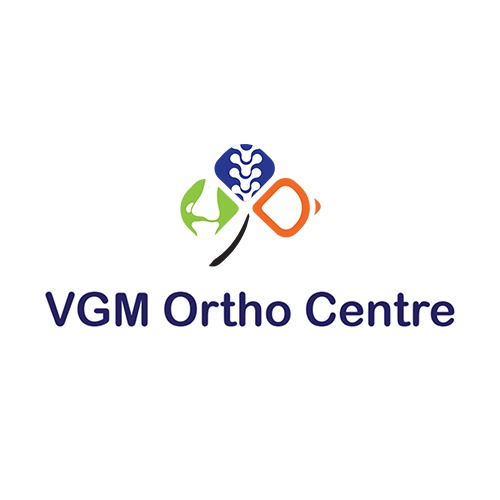

There is a tear in the annulus fibrosus (outer, fibrous ring of an intervertebral disc) which allows the nucleus pulposus (the soft, central portion of an intervertebral disc) to bulge out beyond the damaged outer rings. This herniated disc can press on the nerve/cord to varying degrees. Unless there is compression of the nerves or spinal cord, there may not even be symptoms.
The disc can slip out of position due to (a)ageing, (b)repetitive stress or (c)following an acute predisposing event. In general, the reason is usually multifactorial. Genetics, smoking, high body mass index and sedentary lifestyle also plays a role.
Ageing can cause degenerative wear and tear and hence the disc may prolapse out.
Repetitive stress includes contact sports, constant sitting/squatting for long durations and daily travelling.
Some examples of acute predisposing events includes bending forward to lift weights, long distance travel by two-wheeler/car, bumpy journey, sudden jump on the road bumper, sudden fall on the buttock etc.
Sports involve high velocity, sudden impacts and abrupt bending or torsional movements of, the lower back.
When the spine is straight, such as in standing or lying down, internal pressure is equalized on all parts of the discs. While sitting or bending to lift, internal pressure on a disc can move from 17 psi (lying down) to over 300 psi (lifting with a rounded back). Herniation of the contents of the disc into the spinal canal often occurs when the anterior side (stomach side) of the disc is compressed while sitting or bending forward, and the contents (nucleus pulposus) get pressed against the tightly stretched and thinned membrane (anulus fibrosus) on the posterior side (back side) of the disc. The combination of membrane thinning from stretching and increased internal pressure (200 to 300 psi) results in the rupture of the confining membrane. The jelly-like contents of the disc then move into the spinal canal, pressing against the spinal nerves, which may produce intense and potentially disabling pain and other symptoms.
Symptoms of disc prolapse can vary depending on the location of the herniation, severity/grade of the prolapse and the structures upon which the disc presses upon. The common symptoms are:
1.PAIN
Neck/Back pain of mild to severe grades is the cardinal symptom.
2.RADIATING PAIN
The pain may radiate to the arms (cervical disc) or the legs (lumbar disc) due to pressure and irritation of the nerve roots. Often, herniated discs are not diagnosed immediately, as the patients come with undefined pains in the thighs, knees, or feet.
3.SENSORY CHANGES
Numbness, tingling, paresthesia
4.MOTOR CHANGES
Muscular weakness, paralysis. Pain from a disc prolapse is usually continuous or at least is continuous in a specific position of the body. Pain due to muscle spasm is intermittent/pulsating type.
5.BOWEL /BLADDER INCONTINENCE
It is possible to have a disc prolapse without any pain. This depends on the location of the disc. Such discs are picked up on MRI incidentally. A clinician usually correlates the relation between the clinical symptoms and the MRI findings to identify if the disc prolapse is significant or not.
Rarely a large disc prolapse can press on the cauda equina (nerves within the spinal column). This is a surgical emergency as it can cause irreversible damage/paralysis. The nerve damage can result in loss of bowel and bladder control as well as sexual dysfunction. This disorder is called cauda equina syndrome.
Disc Prolapse is usually diagnosed based on medical history, physical examination, neurological examinations and followed by diagnostic imaging (usually X-rays and MRI scan)
The Differential Diagnosis of disc prolapse include:
1.Mechanical pain
2.Myofascial pain
3.Spondylosis or spondylolisthesis
4.Spinal stenosis
5.Abscess
6.Hematoma
7.Discitis or osteomyelitis
8.Mass lesion or malignancy
9.Myocardial infarction
10.Aortic dissection
More than 95% cases of Disc Prolapse do not need surgery. Conservative treatment includes pain-killer medications, physical therapy modalities (Interferential therapy/TENS/Ultrasonic massage/cervical/lumbar traction), spine core exercise program, corset/back-belt supports, bed rest and avoiding certain strenuous activities.
When conservative treatment fails, epidural injection of steroids along with local anaesthetics may reduce the inflammation and edema of the nerve root/cord. Epidural corticosteroid injections provide a slight and questionable short-term improvement in those with sciatica, but are unlikely of any long-term benefit. The complications are usually very less only.
Surgery is indicated for:
1.Failed conservative treatment
2.Severe initial pain
3.Presence of Neurological deficits
4.Progressive Neurological deficits
5.Cauda Equina Syndrome
6.Recurrent Symptoms
7.Significant Canal Stenosis
1.Micro-discectomy
2.Spinal decompression along with discectomy and fusion is usually done to remove the affected disc and fuse the adjoining vertebrae in order to stabilize the spine.
Microdiscectomy is a surgical procedure done to remove the herniated disk which is pressing on the spinal cord/ nerve. This surgical procedure involves use of a surgical microscope and microsurgical techniques to gain access to the spine. The microscope magnifies and illuminates the area of operation. Only a small portion of the herniated disc that pinches on the nerve roots is removed.
Additional procedure called Foraminotomy enlarges the neural foramen from which nerve roots emerge if there is impingement of the nerve roots there.
Another additional procedure involves removal of the bony projections called as spondylophytes/bone spurs which cause pinched nerves.
This surgery is indicated in the presence of a significant disc prolapse along with instability of the spine which is detected in flexion-extension views of the spine. In this surgery, the affected disc is removed and then bone graft from the removed lamina with or without a metallic prosthesis called cage is used to fuse the two adjacent vertebrae which are unstable and moving abnormally with spine bending movements.
Lumbar disc surgery is usually performed with a skin incision on the back region. But the cervical discs can be approached from the front (anterior cervical discectomy +/- fusion) and posterior cervical discectomy. Due to further advancement in technology, discectomy can be performed through minimally invasive techniques that employ a small incision for the operation. These advanced techniques have diminished recovery time, followed by an improved success rate.